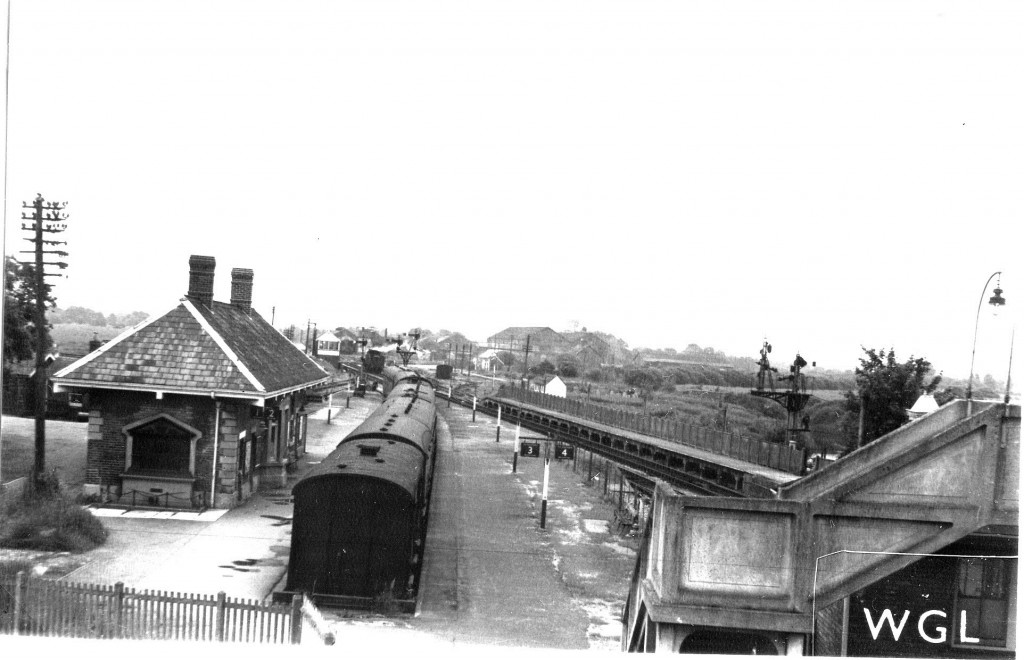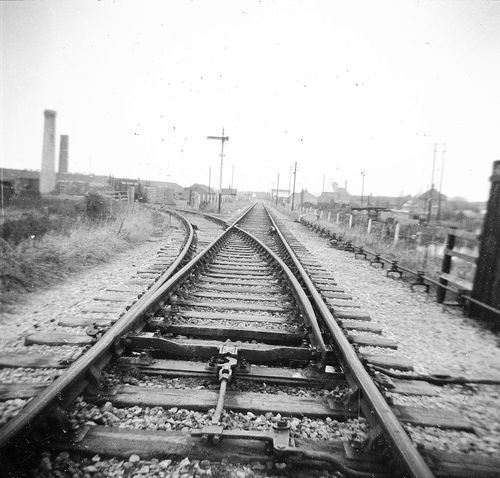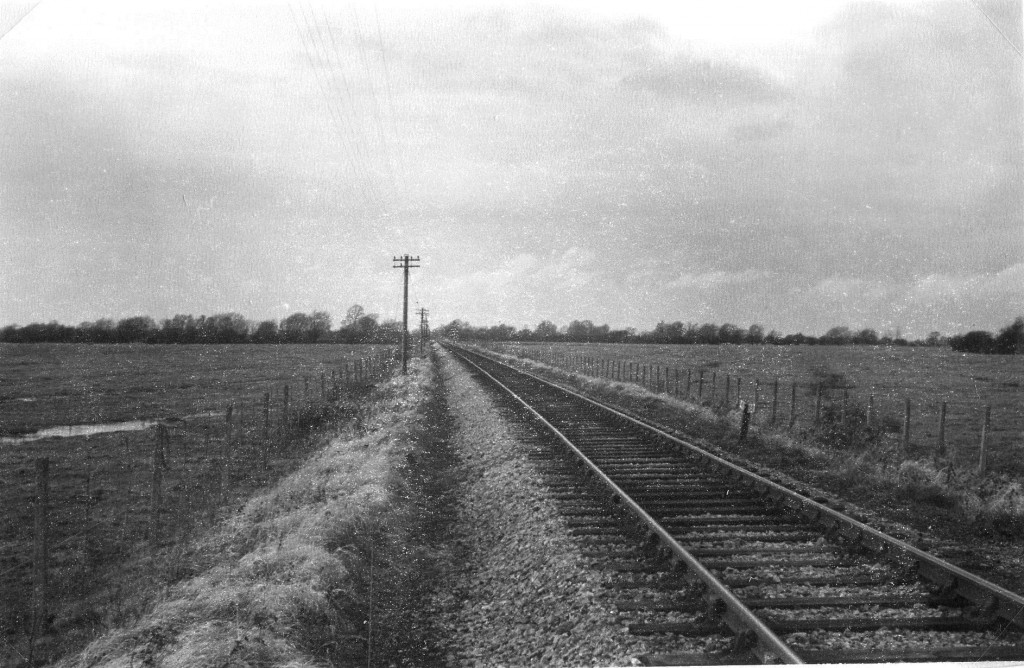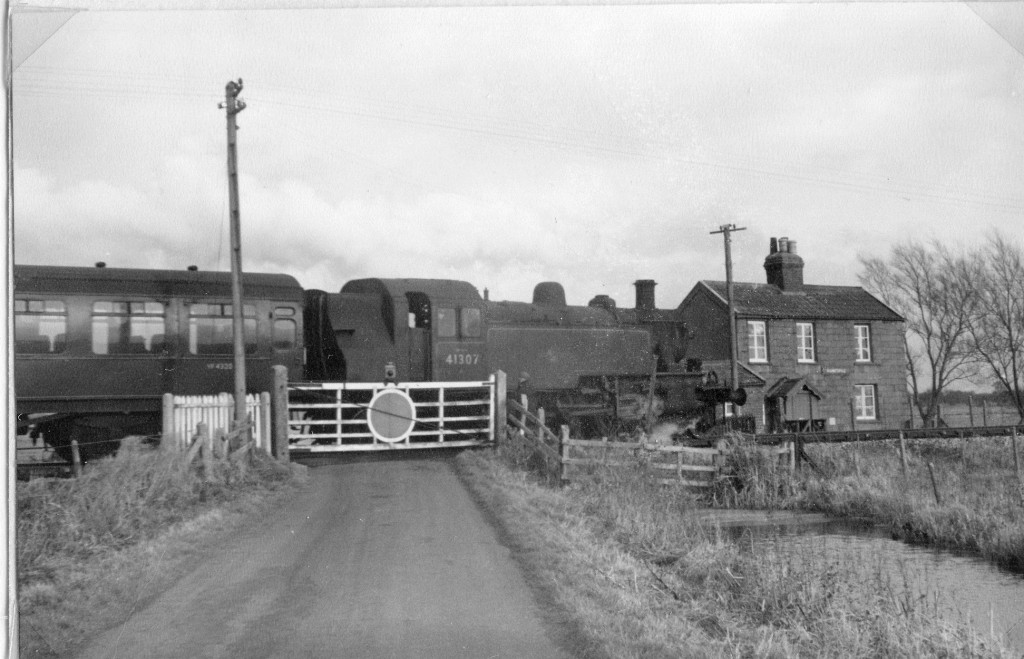Reminiscences given by Mr Ron Andrews to the North Sedgemoor Local History Group in October 1986.
The Somerset & Dorset Railway ran from Bath to Poole, with branch lines from Wells to Cheddar, from Glastonbury to Highbridge & Burnham, and from Edington to Bridgwater, and this was where I spent most of my working life.
I began as a Cleaner’s Boy in the Highbridge Railway Works, working 12 hours a day, six days a week. For those hours I was paid 5/7d per week. The paint, Body & Running Shops employed between 300 and 400 men before the First World War and, after passing through these shops , I was promoted to Cleaner at the Wells Depot. From Wells I moved to Bath and I became a Fireman; then back to Highbridge , eventually becoming a driver. Tank engine cleaning was done at night for over £4 a week in the Highbridge Works.
The S&D livery was blue with a gold and red line. In the Highbridge Paint shop Harry Ramsay was the sign-writer and , when stock was to be repainted , he could draw the red and gold line free-hand. To prepare any of the rolling -stock for painting, boys used to burn off the old paint- work with charcoal.
At Highbridge Station there were 12 drivers and 12 firemen. plus all the station staff. There were six lines at the Station, with the G.W.R crossing the S&D line.

Both the G.W.R. and S&D had Station Masters with a house for each one. When I was young I was a keen swimmer and belonged to the Swimming Club – behind (the old) U.B.M. building in Highbridge. We swam in the River Brue with an annual swim from Burnham Jetty to Steart Island. Later I kept bees and was permitted to keep hives in the Station Master’s garden at Burnham.
Coal was brought by ship from South Wales to Highbridge Wharf, where it was off-loaded by steam crane into the waiting trucks. These were pulled into place by two horses. The horses were stabled by the cattle market and belonged to Fred Wiltshire, who lived at 1, Market Terrace. The ships which were used for this work were the ‘Alfred’, the ‘Julia’ and the ‘Radstock’.
Big coal yards were needed to supply fuel for the kilns at the brickworks in Burnham, Highbridge and Bridgwater.
In Burnham the yards were owned by Edward Slocombe and Percy Williams. Apex Brickworks was very busy and a line went into the Works for the trucks to be off-loaded. We then transported the finished bricks and tiles, together with bath-bricks from Bridgwater, to Bath.

Other cargoes included beer from Holt’s Brewery in Burnham and Starkey’s in Bridgwater, milk from Bason Bridge, shoes from Clarks at Glastonbury ( right and left shoes were packed separately to stop pilfering); bacon from Highbridge Bacon Factory, and, in season ,strawberries on the Cheddar Valley Line, and blackberries, for which the pickers received 1d per pound. The blackberries were used for jam and dye making. There were also the Pigeon Specials which travelled from up North to Bournemouth or Weymouth.
Summer was a busy time with all the excursions and extra farm produce to move. We had to work all hours and weekends. To get to Bournemouth the G.W.R. used S&D track for the Pines Express, and another of our jobs was to pilot these trains. Because of all the excursions, Burnham had an extra long platform. As well as bringing excursions into Burnham we also took Burnham people to Bournemouth. The fare was 2/9d return and the journey tool two hours. Other special trains included taking Roman Catholic pilgrims on their annual journey to Glastonbury, and performers for band contests, which were also held in Glastonbury. Circuses also arrived in Burnham by train and there was a Mail-bag pickup at Springfield road in Highbridge.
Working a rural line sometimes had problems, such as cows or hounds straying on the track. As the Highbridge/Glastonbury line was laid on peat , it had to be inspected daily for subsidence.

We used to take water and coal to the gatekeepers across the Moors.

Sometimes there was an unexpected bonus, such as Lady Gass’ Christmas gift of rabbits, or at West Pennard cider for the driver, fireman and guard.
In 1922 I purchased my first house for £150, and worked on the railway until I reached retiring age when I was given a pension of £17 per week.

I wonder if anyone remembers my grandfather Edward (Ted) Moses who was a signalman at Highbridge from just before the war and lived in Burnham until he retired in the mid 1950s. I have very early childhood memories of being in his box. I think he worked two of them, and riding on a loco to Basonbridge and back. He had a dog, I think it was a Dalmation (more or less) called Spot. He was a very gentle man but his career had been curtailed by the poor health of my grandmother (who I never knew)
Hello David and thank you for your post. I have been in contact with several ex railway employees and their families and will send your post to them. Fingers crossed you get a reply.
John
Hello John. Yes all these memories are so important, if we don’t get them down they disappear when that person passes away. In the book that I first had printed in 2015 I included a chapter called ‘Personal recollections of the railway’. It would be very nice if in a future edition I could include some quotations from your article as some of the memories that Ron recalled are quite unique. Also any other personal recollections would be of interest. I would of course attribute them to him, and your History group. My book(and the web page) is called The Bridgwater Railway Through Bawdrip.
Hello David and thanks for coming back again. I have no problem with you quoting from this site but would ask you please to give reference to captureburnham. The site has a fully paid up and guaranteed life until 2026 and hopefully beyond. The 3rd May 2018 will be the 160th anniversary of the first passenger train to come to Burnham. Archives tell us this prompted much celebration in the town and I am hoping to mark this occasion with a public event. I am also planning to give the current railway feature a more pronounced location on this web. Watch this space but maybe not until later 2017 early 2018.
A valuable memory of the line. Having written a book about the Bridgwater Railway I found some of the comments very interesting. Incidentally, during that process I met and spoke with Percy Parsons, another ex employee of the railway. He wrote a book, now out of print, where he refers to Ron(Chummy) Andrews as a footplate man, in the appendix. Regards Dave Bown
Hello David and thank you for this information. I did meet Chummy on one occasion and regret not having my audio recorder with me. He was a wealth of information of times when driving the locos.
Thanks again,
john